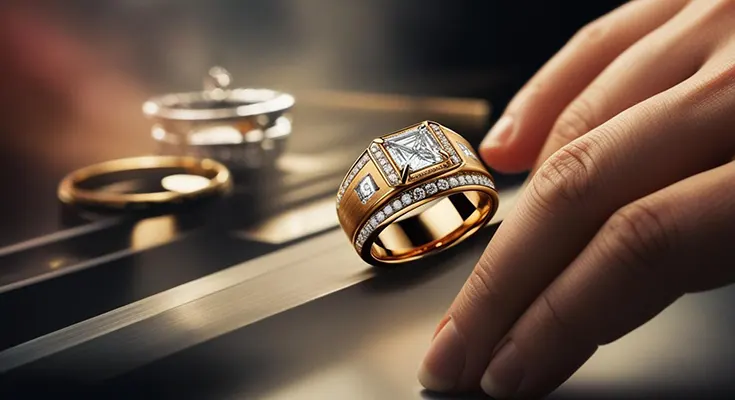The story of a royal engagement ring is much more than a piece of jewelry; it is a symbol of love, legacy, and history. An engagement ring, especially one fit for royalty, goes through an extraordinary journey before it reaches the finger of the person who will wear it as a token of commitment and devotion. From the depths of the earth to the hands of a beloved, the creation of such a ring involves many skilled hands, countless hours of work, and a history steeped in tradition. In this article, we will explore the royal ring’s journey, tracing its path from the mine to the finger, illustrating the artistry and craftsmanship behind these iconic pieces.
The journey begins deep within the earth, where precious metals and stones are mined. For a royal engagement ring, the materials used are of the highest quality, and often the stones come from rare and remote locations. Diamonds, the most popular choice for engagement rings, are often mined in countries such as South Africa, Botswana, and Canada. These diamonds are typically larger and of superior quality, selected for their brilliance and purity. The mining process itself is labor-intensive, requiring both modern machinery and traditional methods to extract the stones from the earth.
Once the diamonds or gemstones are extracted, they are sent to specialized workshops where they undergo the process of cutting and shaping. Cutting a diamond is a precise and delicate art form that requires expert knowledge and skill. Each diamond is carefully examined to ensure that its natural brilliance is maximized. This step in the royal ring’s journey is essential, as the quality of the cut significantly affects the overall appearance of the ring. Royal jewelers are known for their ability to bring out the diamond’s full potential, and many engagement rings feature stones that have been cut into classic shapes like round, oval, or emerald cuts.
Alongside the diamonds, the metal setting for the ring is carefully chosen. For royal rings, precious metals such as platinum, gold, and sometimes even a combination of metals are used. Platinum is often preferred for its durability and sophisticated appearance, while gold remains a timeless choice. The metal is shaped into the desired design, whether it’s a classic solitaire setting, a vintage-inspired halo, or a more modern design. Each design reflects the taste and preference of the royal family member, ensuring that the ring is unique and personal.
Once the stone and metal are prepared, the ring is assembled by master jewelers who painstakingly work to create a seamless and flawless piece. The process requires meticulous attention to detail, as the final product must not only be beautiful but also durable enough to withstand daily wear. The ring is often engraved with symbols or initials that add to its personal significance. For royal engagement rings, these engravings might represent the family’s coat of arms or other meaningful symbols that tie the ring to the legacy of the monarchy.
The final stage of the royal engagement ring’s journey is its presentation. Once completed, the ring is carefully delivered to its rightful owner, who will wear it as a symbol of commitment and royal tradition. For royalty, the engagement ring often becomes a family heirloom, passed down through generations, with each ring telling a unique story. The engagement ring’s journey from mine to finger is a testament to the dedication, artistry, and historical significance of the piece, making it a truly royal symbol of love.
In conclusion, the journey of a royal engagement ring is one of transformation and craftsmanship. From its humble beginnings as a raw gemstone deep within the earth to the elegant design that graces the finger of royalty, every step is crucial in creating a masterpiece that embodies both beauty and meaning. These rings are not only valuable for their materials but also for the stories they carry, making them truly fit for a royal finger.










